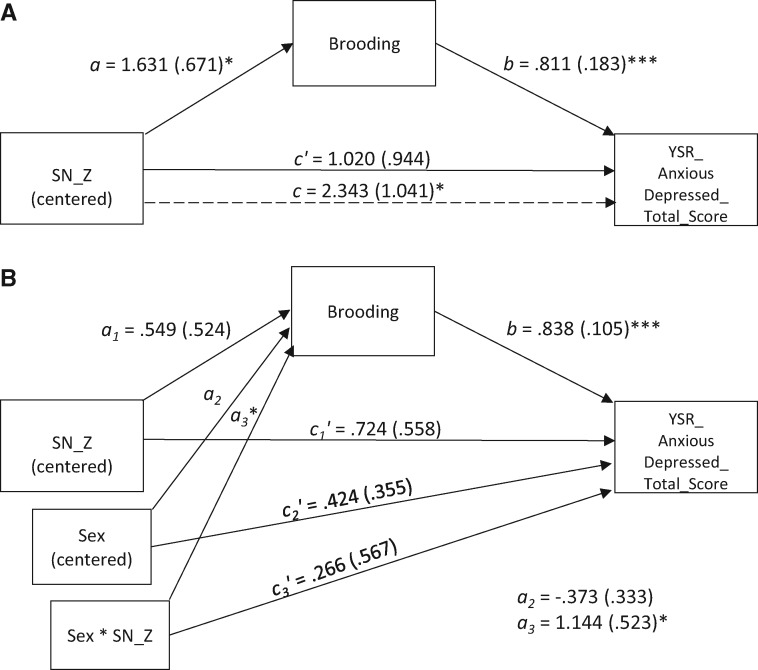Fig. 4.
(A) In girls only, ruminative brooding mediates the relation between SN coherence and anxious/depressed symptoms. The relation is present even after excluding participants who meet criteria for major depressive disorder. Indirect effect is significant: ab = 1.323, SEab = 0.651, 95% bias-corrected CI = 0.351, 2.991. When the model is run excluding n = 9 participants who met criteria for MDD, the indirect effect remains significant: ab = 1.226, SEab = 0.652, 95% bias-corrected CI = 0.270, 2.881. (B) A moderated mediation model including both boys and girls reveals a significant conditional indirect effect of SN coherence on anxious/depressed symptoms through brooding. This relation is significant even after excluding participants who meet criteria for major depressive disorder. Conditional indirect effect of SN coherence on anxious/depressed symptoms through brooding is significant:ω = 1.918, SEω = 0.900, 95% bias-corrected CI = 0.302, 3.877. When excluding n = 9 participants who met criteria for MDD, the conditional indirect effect remains significant: ω = 1.849, SEω = 0.905, 95% bias-corrected CI = 0.233, 3.808. *P < 0.05, **P < 0.01, ***P < 0.001.

